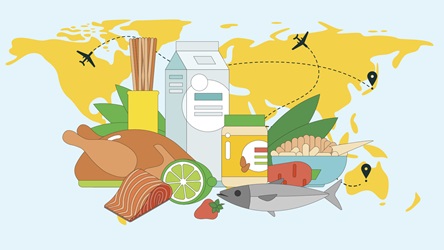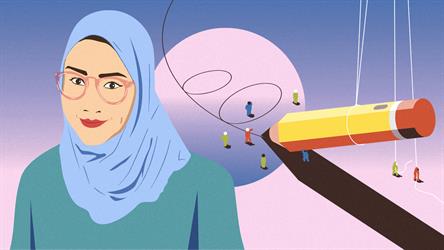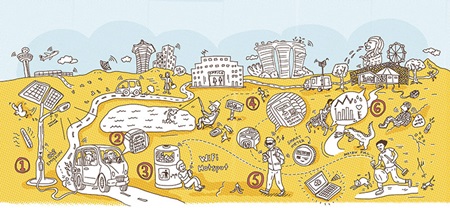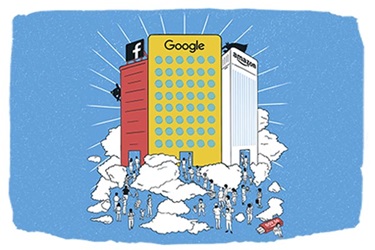Say Hello To The Internet Of Things
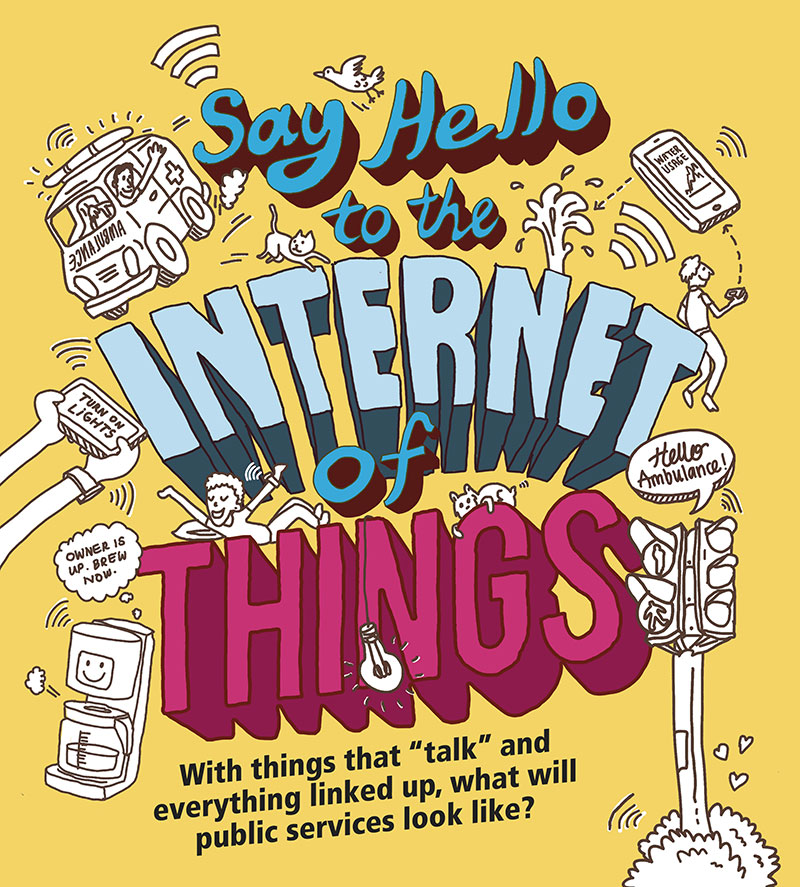
With your smartphone or tablet, you can connect with almost anyone on Earth. What if you could connect with everyday objects too?
Imagine traffic lights that “talk” to one another, as well as to cars. In the event of car accidents, ambulances speeding to the scene could “talk” to traffic lights and turn them green so as to reach accident sites quickly.
That’s a scenario sketched out at The Future of Us exhibition at Gardens by the Bay. But this concept of the Internet of Things (IoT), where a network of objects with sensors can collect, transmit and receive data in real time, is not so far off into the future. It is already here and will soon become an even bigger part of our lives.
Things that “talk”
Fortune magazine describes IoT as adding Internet connectivity to formerly “dumb” or unconnected devices, such as lampposts and traffic lights, enabling them to communicate with users and other devices.
The Infocomm Development Authority of Singapore (IDA) adds that IoT refers to everyday objects that can be read, recognised, located, given an address and controlled via the Internet. These can include everything from electronic devices and vehicles to food packaging and clothing.
And IoT is fundamental to Singapore’s vision of becoming a Smart Nation. The data collected from sensors, and other sensing capabilities, will contribute to the creation of Smart Nation applications and smart services, says the IDA.
The biggest difference between the Internet of the past and IoT is increased connectivity.
The Internet started out by connecting personal computers; it then evolved to using networks to connect with remote devices and software. Cisco’s former Chief Futurist Dave Evans describes IoT as an Internet where the physical world merges with the digital world.
To enable connectivity in Singapore, the IDA, with SPRING Singapore and the IT Standards Committee, has set technical standards so that different devices and connecting systems can work with each other, or interoperate, to support the use of IoT.
The impact on public services
It’s fairly easy to imagine how IoT might change our personal lives. Sensors can turn on the coffee machine as soon as they detect that we are awake, order groceries when we run low on rice or Milo, remind us to take our medicines when we forget, figure out the fastest way for us to get to work, and more.

While the IoT possibilities in companies and the public sector could seem abstract and farther away, there are in fact more opportunities to make a far bigger impact. Indeed, it’s already changing the way public officers work.
According to Cisco, governments are harnessing IoT for smart parking systems, healthcare in homes, connected learning, military systems and managing gas and water resources. It predicts that IoT will generate US$4.6 trillion in value added and costs saved for the public sector by 2025.
The key factors governments should consider when using IoT, Cisco says, are its impact on raising employee productivity, reducing operating costs, boosting revenue, enhancing citizens’ experiences, and improving military connectivity.
The scale of what some governments have already achieved is huge. Cities in the US have saved 30% in waste collection costs by using sensors in bins, which allow for on-demand collection instead of fixed routes and schedules.
More sensors, more data
There’s even more to come. The opportunities of using IoT for public services lie in identifying how better information and data can improve service delivery, wrote William Eggers in Governing magazine.
The police, for example, could use environmental sensors that detect indicators of an emergency and be alerted immediately, without waiting for crimes such as a hit-and-run or even a shooting to be reported.
In schools, said consulting firm Deloitte, IoT could redefine teachers’ work by eliminating routine administrative tasks, such as taking attendance, to focus more on instruction.
Teachers could take attendance automatically via the students’ smartbands, or send a “haptic” vibration (similar to silent notifications on mobiles) to a student’s tablet to have them pay more attention without embarrassing them. They could also use pattern-recognition software to increase students’ understanding of a subject, or data analytics to understand their stress levels.
Here in Singapore, the IDA sees IoT enabling new services to emerge to address challenges such as healthcare and transport. It has identified several technology trends that will shape IoT: the miniaturisation of electronic components that will reduce the cost of producing wearable tech, advances in radio frequency identification technology, instantaneous processing of data, widespread adoption of cloud computing, and improvements in data encryption and authentication that will enhance Internet security.
VIRTUAL CARETAKERS

A futuristic example of healthcare, shown at The Future of Us exhibition, is a smart watch or wristband that can detect an elderly person’s vital signs. Linked to a healthcare system for the elderly, the smart device would be able to detect when the wearer falls or gets injured. A virtual care assistant is beamed via a hologram from the smart watch and checks on the elderly person’s condition: “On a scale of 1 to 10, how would you rate the pain?”
Meanwhile, community healthcare volunteers or doctors are alerted via a smartphone app, and someone nearby who accepts the distress call reaches the elderly person’s home quickly. Find out more about The Future of Us.
The impact of these advancements will be felt in almost every sector. As Dr Vivian Balakrishnan, Minister-in-charge of the Smart Nation initiative, said at the Quality and Standards Conference 2015, being a Smart Nation will enable Singapore to tap new technologies to improve service delivery in healthcare, transport, security, logistics and the environment.
Some of these developments have already happened.
Around the island, government agencies have deployed sensors outdoors to monitor and provide real-time insights on traffic conditions, crowds, air quality and flooding, said the IDA’s Director for National Information Infrastructure Alex Tan.
“We envisage that the data generated [by sensors] may help provide the public better information about their environment and better plan their daily routines,” said Mr Tan.
In public transport, an intelligent system could improve reliability by monitoring for faults and predicting outages, so that repairs can be made or commuters notified early. Real-time insights to traffic conditions may also help people better plan their time and travel movements.
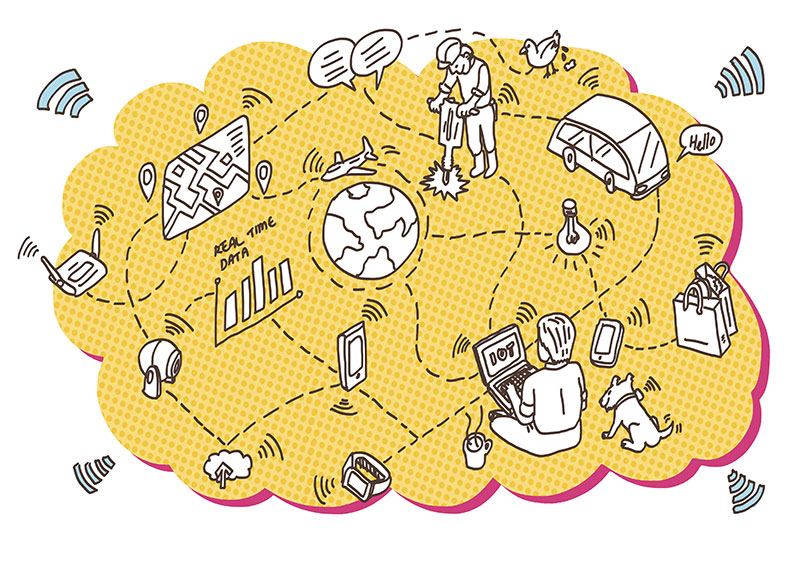
The construction industry, and those who live or work near construction sites, are already benefiting from real-time remote monitoring of noise levels. In 2013, construction company FOSTA approached the Agency for Science, Technology and Research (A*STAR) to develop an IoT-enabled system to monitor noise and vibrations at its construction sites. Previously, FOSTA’s workers had to manually collect data and return to the main office to submit reports. This time-consuming method could not provide timely alerts when noise and vibration levels exceeded safety limits.
The new IoT system helped FOSTA to reduce processing time by 50% across its 40 worksites, with substantial savings on manpower and transportation costs as it no longer had to ferry staff to and from worksites to collect data.
At Jurong Lake District, designated for Smart Nation trials, the Yuhua housing estate has two trials underway with sensors installed in the homes of 10 families.
The first is to test an elderly monitoring system. If irregular behaviour is detected, such as someone taking longer than usual in the bathroom, text messages are sent to alert family members. The second trial is to let residents monitor their energy and water usage via a mobile app. Alerts are sent when consumption is unusually high, so residents can cut back on usage or investigate leaks. More Yuhua residents will be able to test such technologies from February.
Outside of homes and around the estate, the data from sensors will also facilitate more accurate government planning and services, the IDA’s Mr Tan said. That will encourage more anticipatory services from public agencies and encourage co-creation by communities, through hackathons, for example.
TALKING WITH THE TREES

IoT can boost citizen engagement in unexpected ways. Officials in Melbourne, Australia, assigned ID numbers and email addresses to trees in the city to make it easier for citizens to report problems like dangerous branches. But people started writing directly to the trees, too. The trees have now received thousands of messages ranging from simple greetings to love letters and existential dilemmas.
Comprehending data
To prepare for the changes resulting from this growth in IoT, public officers will need to embrace the vast potential of technology and think about users’ needs by seeing them through the users’ eyes.
Public officers will first need to develop the ability to “have a conversation” with their data, said McKinsey Principal Mikael Hagstroem. Discovering data, through data visualisation tools, for example, can lead to a spirit of inquiry, asking questions not asked before and coming up with new hypotheses. Sensors should then be deployed to test their ideas. Having sensors is also going to require that officers become more analytically savvy, so they can analyse all the data they collect.

“I think this is not about creating more computer scientists,” Mr Hagstroem told Challenge. “It’s going to be about creating the ability for everyone to have interactions with data, much like how we learn how to use social media, whether we like it or not.”
With connectivity come risks
While there are plenty of benefits from IoT, dangers also lurk. Having all those interconnected gadgets also means that the risk and repercussions of cyberattacks increase because almost any physical object can be connected to a network. Researchers have simulated cyberattacks that allowed them, for example, to control cars and use child-monitoring devices to shout at sleeping babies.
Beyond these security risks, Deloitte said governments will also need to be sensitive to social implications, such as data leading to discrimination if it is used to categorise or treat people differently without an appreciation for specific social, economic or racial factors.
The result, as McKinsey described it, is that policymakers will need to update and strengthen policies to protect the privacy and property rights of businesses as well as to regulate entirely new forms of activity in the public sphere. One approach Singapore is taking, according to the IDA, is that data used in Smart Nation initiatives be anonymised so that the origin and source of the data cannot be traced.
Using IoT well
Whether you have experienced it for yourself, the Internet of Things is already here and the pace of change as well as the tremendous improvements it will make in people’s lives will only increase. Just as the successful widespread use of the Internet required smart policies and government support, so too will the value of IoT depend on policymakers and our response to it.
DATA FOR A BETTER WORKPLACE
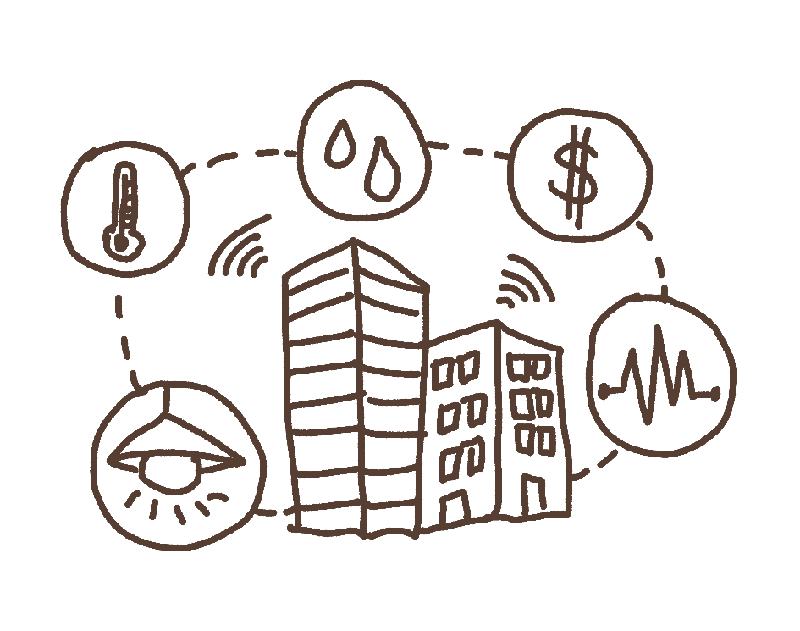
The General Services Administration, a US government agency that manages nearly 10,000 government-owned buildings, has started using IoT in building management. Collecting 29 million data points daily from sensors throughout its buildings, it can monitor everything from light use to humidity, to boost productivity and promote good health by optimising conditions when workers are present and saving on energy costs when they are not.
Find out more about how IoT-enabled technology will change public services here and around the world:
- POSTED ON
Jan 5, 2016
- TEXT BY
Richard Hartung
- ILLUSTRATION BY
Mushroomhead
-
Deep Dive
Strengthening Singapore’s Food Security




